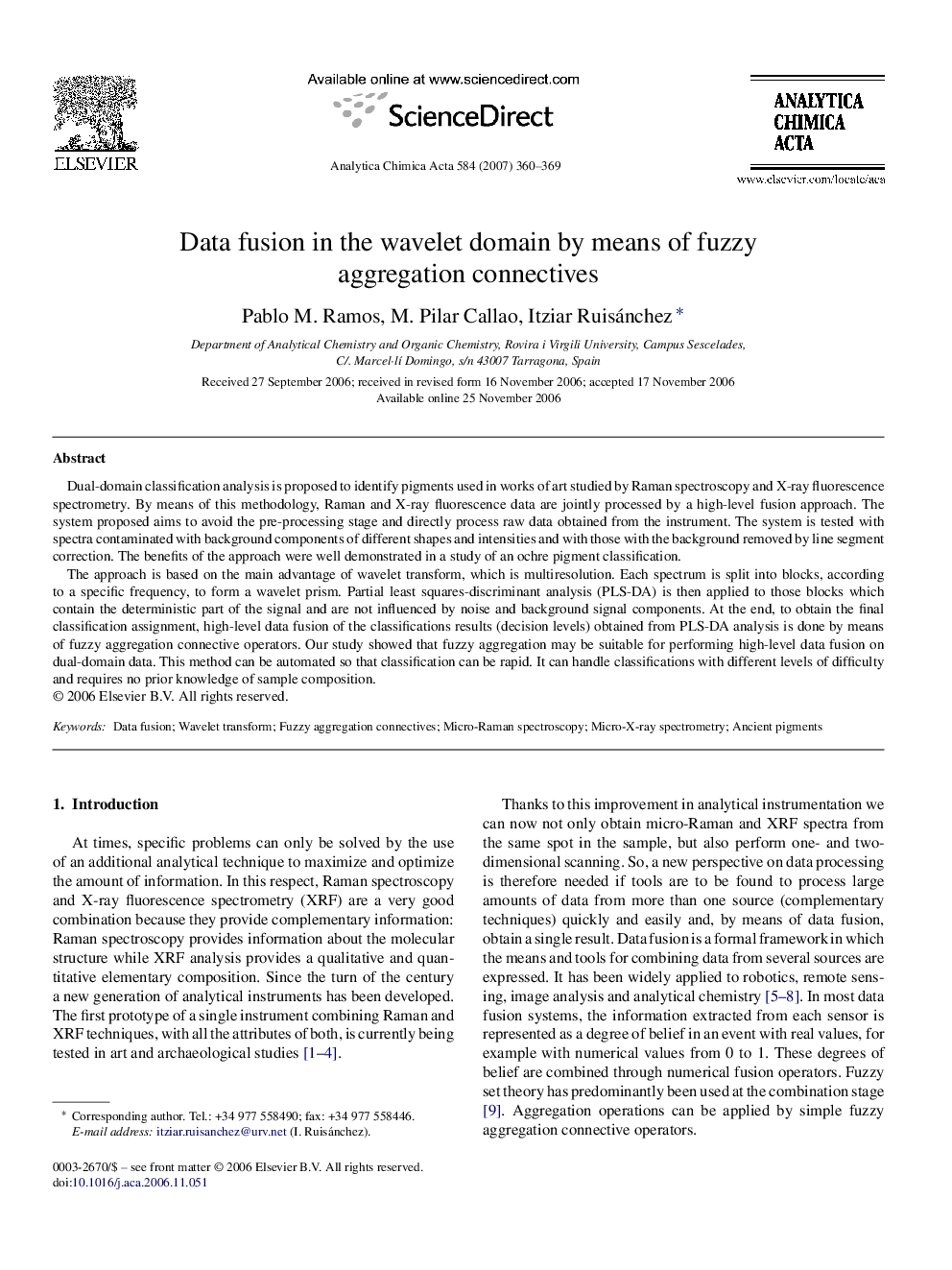| Article ID | Journal | Published Year | Pages | File Type |
|---|---|---|---|---|
| 1170850 | Analytica Chimica Acta | 2007 | 10 Pages |
Dual-domain classification analysis is proposed to identify pigments used in works of art studied by Raman spectroscopy and X-ray fluorescence spectrometry. By means of this methodology, Raman and X-ray fluorescence data are jointly processed by a high-level fusion approach. The system proposed aims to avoid the pre-processing stage and directly process raw data obtained from the instrument. The system is tested with spectra contaminated with background components of different shapes and intensities and with those with the background removed by line segment correction. The benefits of the approach were well demonstrated in a study of an ochre pigment classification.The approach is based on the main advantage of wavelet transform, which is multiresolution. Each spectrum is split into blocks, according to a specific frequency, to form a wavelet prism. Partial least squares-discriminant analysis (PLS-DA) is then applied to those blocks which contain the deterministic part of the signal and are not influenced by noise and background signal components. At the end, to obtain the final classification assignment, high-level data fusion of the classifications results (decision levels) obtained from PLS-DA analysis is done by means of fuzzy aggregation connective operators. Our study showed that fuzzy aggregation may be suitable for performing high-level data fusion on dual-domain data. This method can be automated so that classification can be rapid. It can handle classifications with different levels of difficulty and requires no prior knowledge of sample composition.
